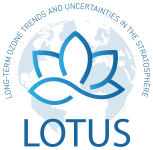Speaker
Dr
Eliane Maillard Barras
(MeteoSwiss)
Description
The LOTUS report has put into evidence discrepancies between the post-1998 ozone trends by NH microwave radiometers (MWR) and the others ground-based (GB) instruments (LIDAR, DOBSON Umkehr, FTIR). The NH MWR radiometers show high trend values in the middle stratosphere and negative trend values in the low mesosphere. In this study, we investigated the Payerne MWR dataset and trends.
A careful harmonization of the ozone profiles dataset has been performed by varying the measurement accumulation time in order to insure a constant value for the measurement contribution and by comparison with the MLS ozone profiles dataset. Trends have then been derived by multiple linear regression (MLR) and dynamic linear modeling (DLM) on the 2000-2017 time range and compared.
While the Payerne MWR middle stratospheric trends are in accordance with the others GB instruments trends as reported by LOTUS, the negative trend values are confirmed in the low mesosphere.
Moreover, MLR is deriving positive trends for the Payerne MWR nighttime dataset and negative trends for the daytime dataset in the low mesosphere. Similar conclusions are derived from the DLM with, however, a systematic change in trend values between 2008 and 2010. Comparison with trends derived on ozone profiles from GROMOS MWR, MLO MWR,MLS satellite and SOCOL model have been performed. While the Payerne MWR negative daytime trends can be related to the SOCOL OH trends, the Payerne MWR positive nighttime trends are supposed to be related to nighttime high ozone content in the mesosphere.
Primary author
Dr
Eliane Maillard Barras
(MeteoSwiss)

